Wings of Wonder: Tracing the Largest Monarch Butterfly Migration Across North America
Every late summer, Monarch butterflies undertake a multi-generational journey from Canada to the same forests of Mexico – a place unknown to them, their parents, or even their grandparents
📍 Sierra Madre Mountains, Mexico
Migrations form an intrinsic part of life's rhythm on Earth. Whether it's humanity's age-old quest for survival and prosperity, sea turtles navigating between foraging and nesting grounds, or the Great Migration of wildebeests and zebras in the Serengeti, this phenomenon has shaped species, animal kingdoms, and human civilizations. Among these migrations, one stands out as particularly unique: the Monarch butterfly's multi-generational journey from Canada, across the United States, to Mexico's Sierra Madre Mountains, and back.

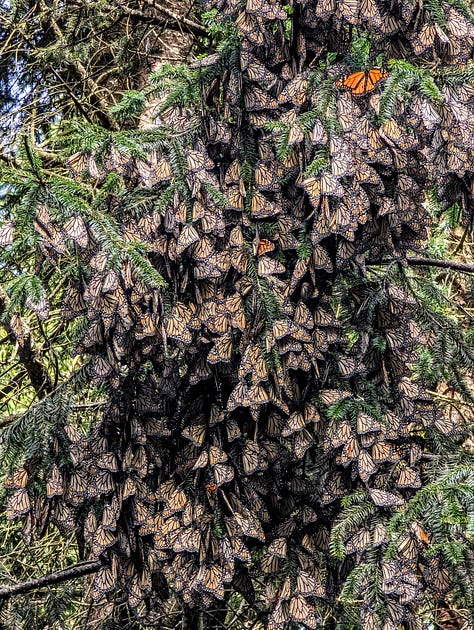

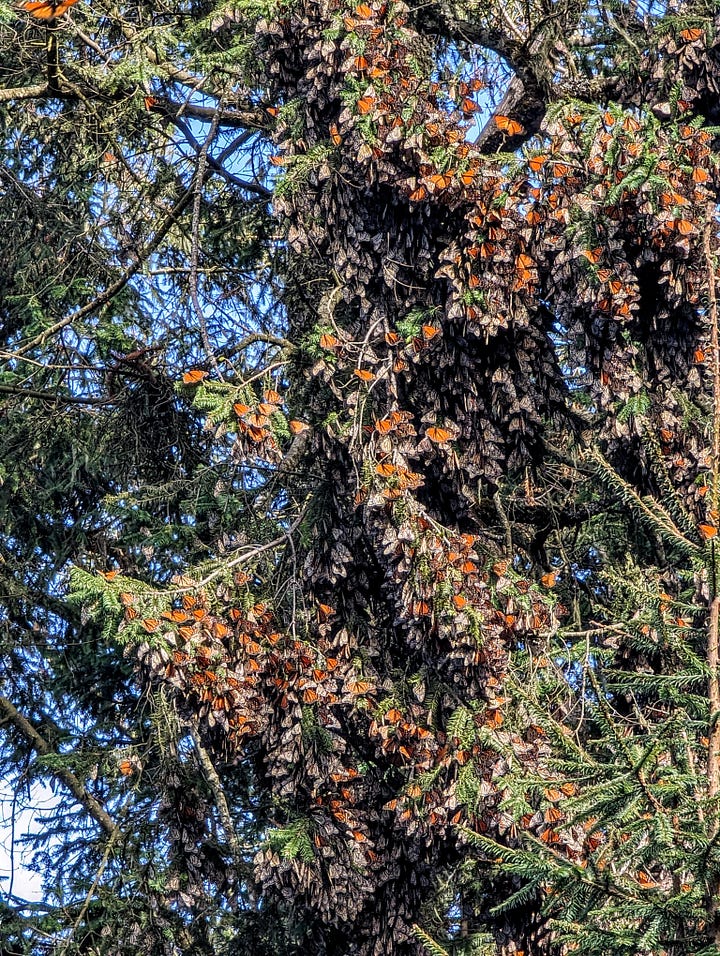
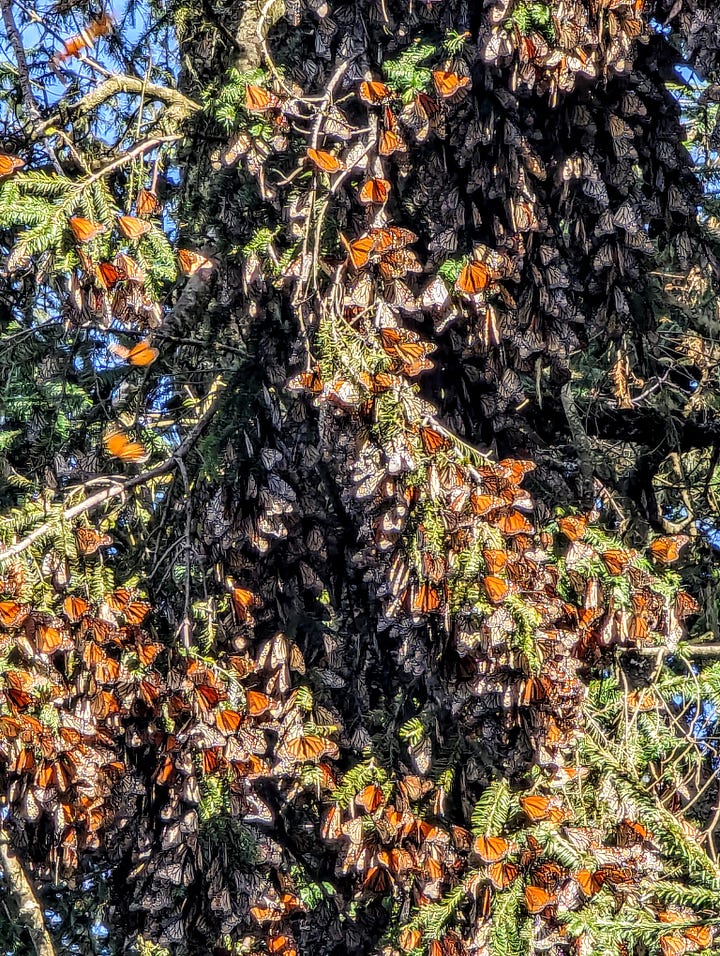
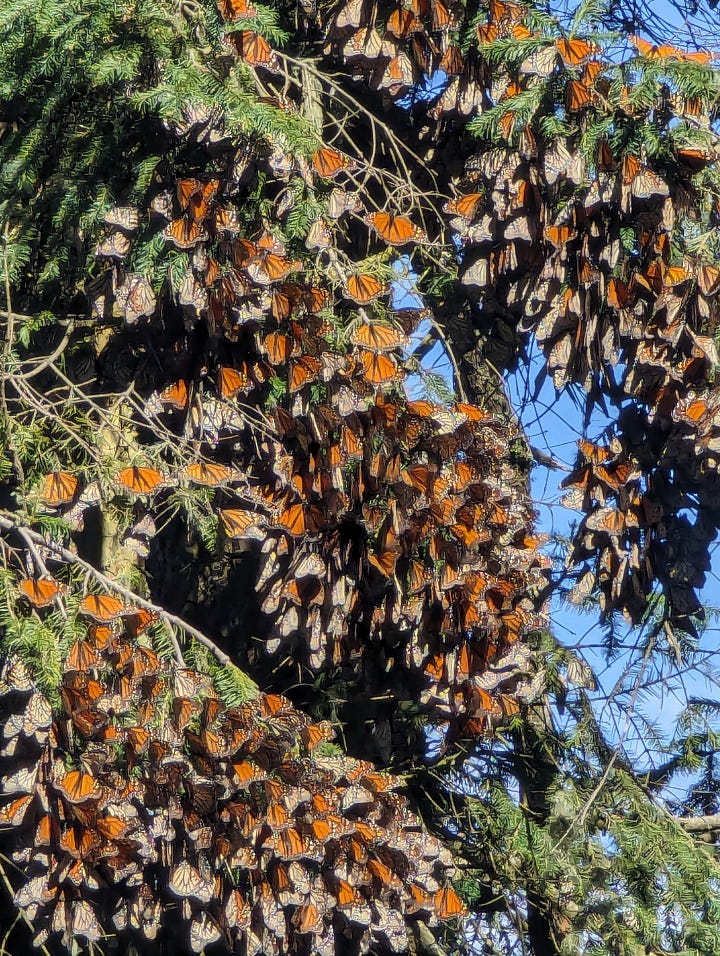
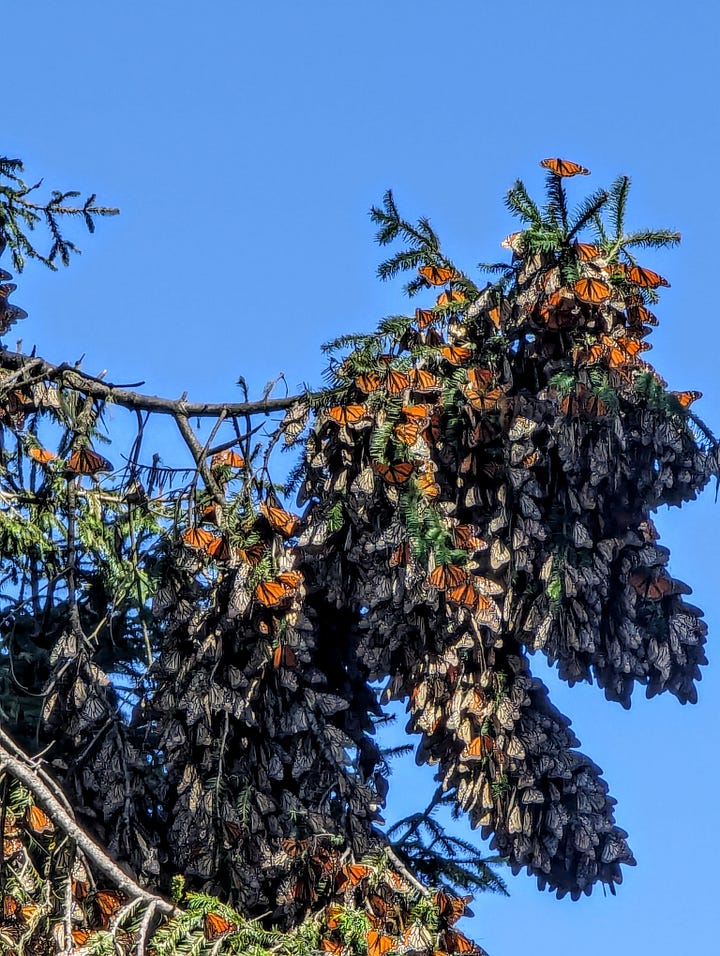
The Monarch's migration is driven by an unwavering search for milkweed, which blankets trees in their resting and nesting sites. The butterflies huddle together to ride out winter in central Mexico, only to burst like orange confetti as the sun warms the air to at least 55°F (13°C). As spring emerges, the air thickens with thousands taking flight to procreate. The new generation then sets out on a northward journey. Three to four generations later, they reach Canada via the United States on a migration path so extraordinary that the Monarch symbolizes NAFTA (North American Free Trade Agreement, now the USMCA), the trilateral trade bloc between Mexico, Canada, and the United States.
As summer wanes in Canada, shorter days and cooler temperatures signal to the Monarchs that it’s time to tank up on nectar and head back south for their cross-continental journey. At breeding grounds in the United States and Canada along the way, milkweed, toxic to most species of birds and mammals, sustain their caterpillars. This toxicity makes butterflies poisonous to other animals when eaten in excess (it takes up to 13 pounds of butterflies to make a cow sick).
For Monarchs, life begins as females lay an impressive 300-500 eggs, each barely larger than a pinhead, on milkweed. Swiftly, in a span of 3-8 days, caterpillars hatch atop the milkweed, ingeniously consuming their own shells, and adorn themselves as black, yellow, and white-striped larvae for 7-17 days. A chrysalis envelops their body as they transition to the immobile pupal stage, during which they rest beneath a milkweed leaf for 8-15 days. Inside this cocoon, metamorphosis unfolds: wings sprout, bodies undergo a remarkable transformation, culminating in the emergence of butterflies. In adulthood, courtship occurs in the air, mating on the ground, and the laying of eggs on milkweed. After fulfilling their reproductive legacy, the butterflies gracefully exit the stage, leaving their offspring to carry on with one of the planet's most extraordinary migrations.
The Monarch's lifespan spans from a few weeks to a month, except for the remarkable "super generation" that emerges late in summer, tasked with the cross-continental journey from Canada to Mexico. This pre-autumn cohort boasts a longevity up to eight times that of its counterparts, aided by their instinctual delay of reproduction until March, post-migration, before laying eggs and completing their life cycle.
While small populations of Monarchs have been found in places as far-flung as Hawaii, Spain, and Australia, only those in North America make this cross-continental and multigenerational migration. North American Monarchs have two groups, divided by the impassable Rocky Mountains. The Western breeding group concludes its migration in California during the winter months, while the larger Eastern breeding group consistently descends upon the familiar forests of Central Mexico year after year.
This age-old migration, spanning millions of years, is now under imminent threat as Monarchs confront uncertain survival prospects. July 21, 2022, marked a somber but necessary milestone for the Monarchs as the International Union for Conservation of Nature (IUCN) classified them as endangered. The Western Monarch population has plummeted by a staggering 99% since the 1980s, while its Eastern counterpart has witnessed a slightly better but still grave 80% decline. In just four decades, this enduring migration and the tenacious species that orchestrates it have become endangered. The Monarch butterflies face multiple threats to their survival. The loss of their habitat is a significant issue, as large forests along their migration route are being cleared. Additionally, pesticides pose a threat by destroying milkweed, which is essential for the Monarch's sustenance. Climate change adds to their challenges, leading to more frequent extreme weather events like floods, forest fires, and droughts.
Efforts to conserve the Monarchs are challenging due to their migration across three political boundaries encompassing some of the world's largest countries. Despite these hurdles, there are some promising signs amid the difficulties. The Endangered classification has empowered governments in Canada, the United States, and Mexico to collaborate with conservation groups, businesses, and communities to launch initiatives focused on restoring, conserving, and managing ecosystems sustainably.
Mexico took a pioneering step in 1986 by establishing the Monarch Butterfly Reserve, covering 217 square miles of community-owned land. This initiative not only protected the butterflies but also facilitated a transition for locals from traditional, non-environmental livelihoods like logging to more conservation-focused activities such as beekeeping. Moreover, the growth of ecotourism has provided additional funding for conservation efforts.
Monarchs are unique among insects as they migrate in a manner similar to birds, covering thousands of miles from cooler northern regions to the warmth of the south, where they spend the winter. What makes this phenomenon even more remarkable is that each returning generation ventures back to a place they have never been – and neither have their parents or grandparents. The Monarchs' multigenerational migration is a striking spectacle, weaving life across continents and generations. However, this timeless and robust journey has now become precarious and fragile.


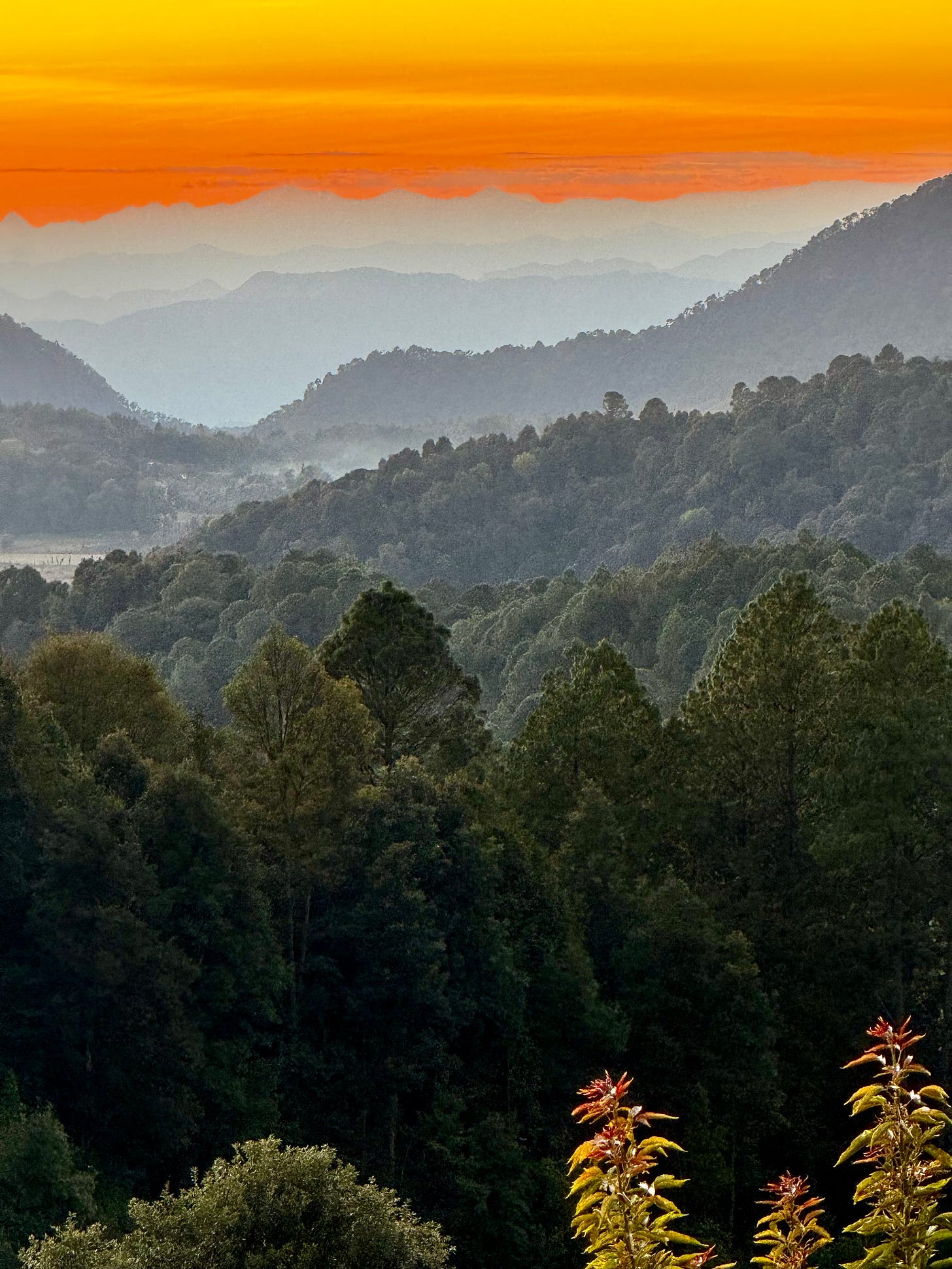
Cerro Pelon was one of my favorite journeys. Thanks for the memories!
Take a ride on Monarch butterflies' wings of wonder on their multi-generational migration from Canada to the same forests of Mexico – a place unknown to them, their parents, or even their grandparents. 🦋 🇲🇽
https://superlative.substack.com/p/monarch-butterfly-migration